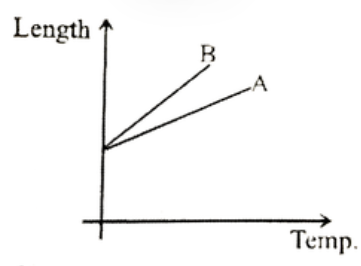Length, Mass, Temperature are ?
To answer the question "Length, Mass, Temperature are?", we can follow these steps:
Step 1: Identify the Quantities
We need to identify what length, mass, and temperature are. These are all measurements that describe physical properties.
Step 2: Understand Measurement
Each of these quantities can be measured using specific instruments:
- Length can be measured using a ruler or measuring tape.
- Mass can be measured using a spring balance or weighing machine.
- Temperature can be measured using a thermometer.
Step 3: Define Physical Quantities
Physical quantities are defined as those quantities that can be measured. Since length, mass, and temperature can all be measured, they fall under this category.
Step 4: Conclusion
Therefore, we conclude that length, mass, and temperature are all examples of physical quantities.
Final Answer
Length, mass, and temperature are physical quantities.
---
We need to identify what length, mass, and temperature are. These are all measurements that describe physical properties.
Each of these quantities can be measured using specific instruments:
- Length can be measured using a ruler or measuring tape.
- Mass can be measured using a spring balance or weighing machine.
- Temperature can be measured using a thermometer.
Physical quantities are defined as those quantities that can be measured. Since length, mass, and temperature can all be measured, they fall under this category.
Therefore, we conclude that length, mass, and temperature are all examples of physical quantities.
Length, mass, and temperature are physical quantities.
Topper's Solved these Questions
- PHYSICAL QUANTITIES AND MEASUREMENT Book:ICSEChapter:PHYSICAL QUANTITIES AND MEASUREMENT Exercise:Exercises (Section II) Give reasons for the following.
Explore 4 Videos
- PHYSICAL QUANTITIES AND MEASUREMENT Book:ICSEChapter:PHYSICAL QUANTITIES AND MEASUREMENT Exercise:Exercises (Section II) Explain the following terms.
Explore 3 Videos
- PHYSICAL QUANTITIES AND MEASUREMENT Book:ICSEChapter:PHYSICAL QUANTITIES AND MEASUREMENT Exercise:Exercises (Section I) Choose the correct option to fill in the blank.
Explore 5 Videos
- MODEL TEST PAPERS Book:ICSEChapter:MODEL TEST PAPERS Exercise:TEST PAPER II (SECTION II) Numerical questions
Explore 2 Videos
Similar Questions
Knowledge Check
At constant temperature, in a given mass of an ideal gas
Athe ratio of pressure and volume always remains constantBvolume always remains constantCpressure always remains constantDthe product of pressure and volume always remains constant.
Increase in length/(Initial length x rise in temperature)
View Solution................. (Length/Mass) can be measured in inches.
View SolutionA copper ball of mass 100 gm is at a temperature T. It is dropped in a copper calorimeter of mass 100 gm, filled with 170 gm of water at room temperature. Subsequently, the temperature of the system is found to be 75∘C . T is given by : (Given : room temperature = 30∘C, specific heat of copper =0.1cal/gm∘C)
View SolutionDuring heat exchange, temperature of a solid mass does not change. In this process, heat
View SolutionIn a container of negligible mass 140 g of ice initially at −15∘C is added to 200 g of water that has a temperature of 40∘C. If no heat is lost to the surroundings, what is the final temperature of the system and masses of water and ice in mixture ?
View SolutionWhy length, mass and time are chosen as base quantities in mechanics ?
View SolutionThe raise in the temperature of a given mass of an ideal gas at constant pressure and at temperature 27∘ to double its volume is
View Solution


